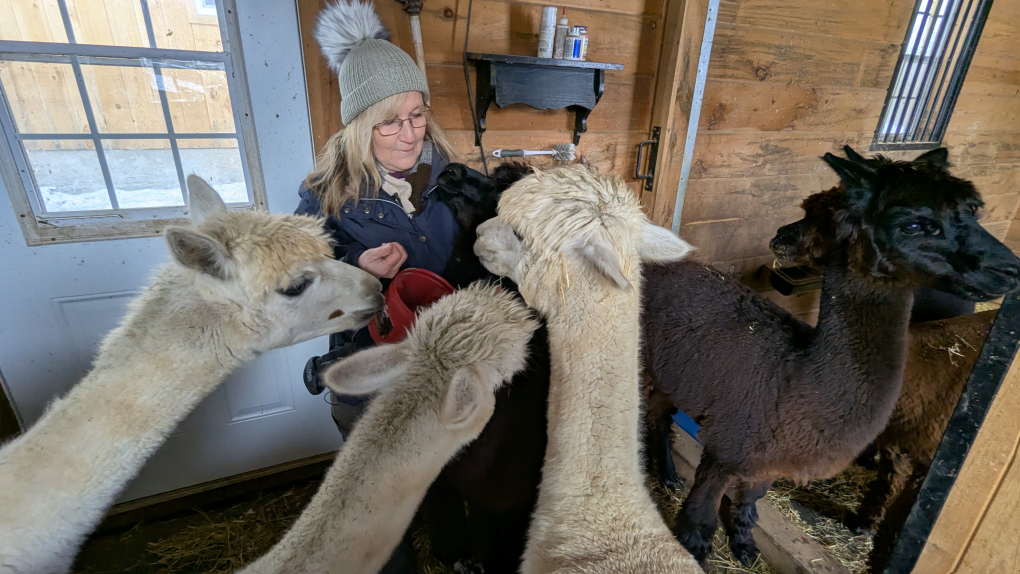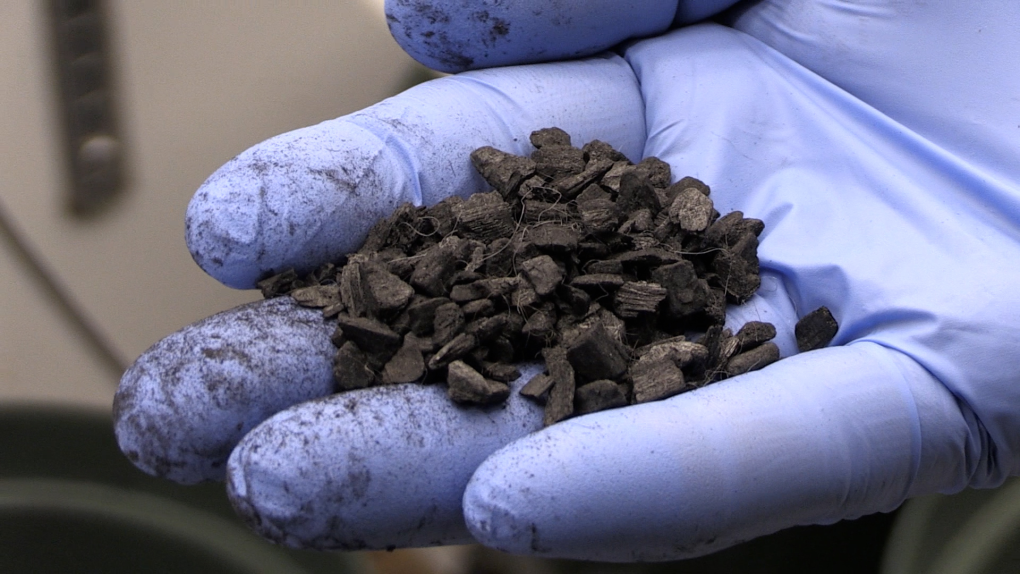University of Waterloo harnessing the power of alpaca poop
The University of Waterloo is trying to create an unusual type of compost.
“Alpacas have this unique digestive system that when they digest the food, by the time the manure comes out is kind of more stable compared to other manure," Augustine Osei, a post-doctoral fellow in the Faculty of Environment at University of Waterloo said.
Osei is trying to combine alpaca manure and hair to make a nutrient rich compost.
"Bringing in the hair is going to help in terms of retaining moisture as well as improving the physical nature or the physical feel of the compost so that you can help a very good aerobic system in," Osei said.
The idea all started when an alpaca farmer in Flamborough was trying to find a use for the leftover hair, known as waste fiber, that doesn't have the quality needed for clothing.
"Alpaca waste fiber is a real issue and there are so many farms that are just throwing it out. This project will allow us to have a byproduct for alpaca waste,” Frances Stewart, the owner of Maple Ridge Acres said.
Stewart typically sells the manure or burns it.
"The bag of poop without the fiber in it that I have is Alpaca Gold," Stewart said.
Stewart also throws out the fiber waste hair from her 14 alpacas. She wanted a better use for it and contacted the university for help. She’s now sent a few pounds of hair and excrement for the experiment.
"[Alpacas] are communal pooers, so they actually will poo in the same pile. They all go to the same location, which makes it very easy to clean and pick up," Stewart said.
 Frances Stewart feeds her alpacas at Maple Ridge Acres in Freelton, Ont. on Dec. 6, 2024. (Dan Lauckner/CTV News)
Frances Stewart feeds her alpacas at Maple Ridge Acres in Freelton, Ont. on Dec. 6, 2024. (Dan Lauckner/CTV News)
According to Osei, manure from cows, horses and even chickens is high in nitrogen, and the resulting compost can cause crops to burn. He said alpaca waste can be applied directly to crops without damaging them.
However, alpaca poop has less nitrogen than the leavings of other barnyard animals and the hair and poo isn't enough for a nutrient rich compost. So the university is combining it with a biomass known as Biochar.
"Biochar has more carbon and less nitrogen. By blending that high carbon component with the manure, we are able to spike the carbon to nitrogen ratio," Osei said.
"It's going to prevent leaching. It'll help it break down much more quickly. It will reduce any odour if there is any associated odour with it, and it'll just provide far more nutrients to the soil," Jodi Formosi, CEO and founder of Bella Biochar said.
 Biochar is used in an experiment at the University of Waterloo on Dec. 6, 2024. (Colton Wiens/CTV News)
Biochar is used in an experiment at the University of Waterloo on Dec. 6, 2024. (Colton Wiens/CTV News)
Osei said another positive to alpaca poop is it doesn’t give off nearly as much of an odour as other manures. But working with poop every day does take some getting used to.
Over the next months Osei is testing out the best combinations of hair, manure and Biochar to see what provides the best kind of compost.
The compost is not ready for commercial use yet. By spring Osei hopes to identify the three most productive combinations to test out on the farm and will analyze the impact they have on the soil in the following fall.
CTVNews.ca Top Stories

W5 Investigates 'I'm in financial ruin': Canadian homeowners sound alarm over contractor accused of fraud
This W5 investigation focuses on mother and daughter homeowners who found themselves in a fight with a general contractor over money they say they're owed, and over work that was never completed on their dream home.
Liberal MPs gather for first time since Trudeau announced his resignation plans
Liberal MPs are meeting in Ottawa today for the first time since Prime Minister Justin Trudeau announced he will step down.
Thousands flee as wildfires burn out of control in and around Los Angeles and homes are destroyed
California firefighters battled wind-whipped wildfires that tore across the Los Angeles area, destroying homes, clogging roadways as tens of thousands fled and straining resources as officials prepared for the situation to worsen early Wednesday.
Trump is open to using 'economic force' to acquire Canada; Trudeau responds
Prime Minister Justin Trudeau said 'there isn’t a snowball’s chance in hell that Canada would become part of the United States,' on the same day U.S. president-elect Donald Trump declared that he’s open to using 'economic force' to acquire Canada.
Thinking of a career change? Here's what employers are hiring for this year
As 2025 gets into full swing, gaps in Canada's job market offer new opportunities to start fresh -- in some sectors, more than others.
A B.C. mom's real-life nightmare and the search to find her trafficked daughter
A Vancouver island mom shares the story of what happened to her teenaged daughter – and a warning for other parents about sex trafficking.
Canadian naval vessel shadowed by Chinese war ship in the East China Sea
CTV National News is on board the HMCS Ottawa, embedded with Canadian Navy personnel and currently documenting their work in the East China Sea – a region where China is increasingly flexing its maritime muscle. This is the first of a series of dispatches from the ship.
'What are we talking about?' Experts respond to Trump's 'economic force' comments
Incoming U.S. president Donald Trump's threats to use 'economic force' against Canada and its industries are sparking worry and disbelief.
Patient dies in waiting room at Winnipeg hospital
An investigation is underway after a patient waiting for care died in the waiting room at a Winnipeg hospital Tuesday morning.

































